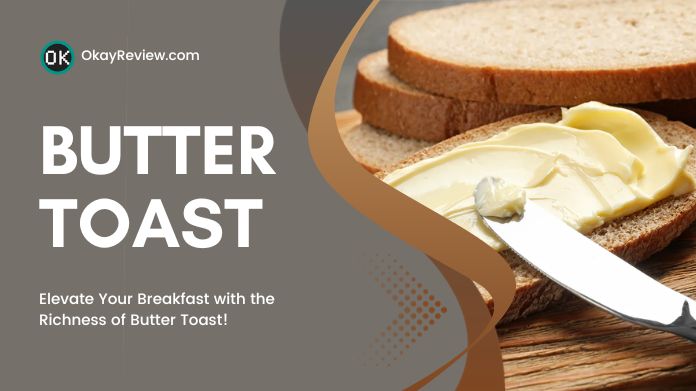Butter toast, a humble yet beloved staple, holds more secrets to perfection than one might think. In this guide, we’re diving into creating the perfect butter toast.
It’s not just about slathering butter on bread; it’s an experience, a ritual that can transform a simple slice into a delightful treat; you can also use peanut butter.
From choosing the right bread to mastering innovative buttering techniques, we’ll show you how easy it is to elevate your butter toast game.
Whether you’re a toast aficionado or a curious beginner, these tips and tricks will help you unlock the full potential of butter toast, making every slice a little piece of heaven.
Let’s embark on this tasty journey together and discover the simple joys of perfect butter toast.
Table of Contents
The Basics of Butter Toast? Nutritional Value
Butter toast is a classic, simple delight enjoyed by many. It’s just bread and butter at its core, but these two ingredients hold more than taste.
When it comes to nutrition, it offers a balance of carbs, fats, and a bit of protein. The bread, typically a source of carbohydrates, provides the energy needed to kickstart your day.
Whole grain or whole wheat varieties add a bonus of fiber and more nutrients compared to white bread. The butter, while often frowned upon for its fat content, brings its own set of benefits.
It contains small amounts of vitamins A, D, E, and K. Plus, it adds a bit of protein and calcium. The key to butter is moderation. Too much can add excess saturated fats to your diet.
Together, butter and toast can be part of a balanced diet. It’s a quick, easy-to-make snack that gives you energy. Pair it with a piece of fruit or a glass of milk, and you have a more rounded meal.
Preparing Your Bread for Toasting
Getting your bread ready for that perfect butter toast is an important step. First, choose the right type of bread.
Whether white, whole wheat, sourdough, or rye, each brings a unique flavor and texture to your toast. Thicker slices work best as they hold up well under the heat and provide a satisfying crunch.
Next, adjust your toaster settings. If you like your toast golden and crispy, go for a medium to high setting. For a softer, lighter toast, a lower setting is your friend.
Remember, the perfect toast is about personal preference, so feel free to experiment.
Preheat them to the right temperature if you’re using an oven or a stovetop.
For the oven, a broil setting ensures an even toast, while a medium flame on the stovetop gives you more control over the toasting process.
Lastly, timing is key. Keep an eye on your bread as it toasts to avoid burning. Once it reaches your desired browning level, it’s ready for that delicious layer of butter.
Innovative Buttering Techniques
1. The Melt and Brush Method:
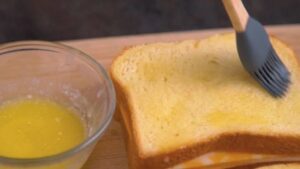 This method is perfect for those who love evenly buttered toast.
This method is perfect for those who love evenly buttered toast.
Simply melt your butter in the microwave, then use a pastry brush to apply it to your toast gently.
It’s great for avoiding tears in softer bread and ensures every bite of your butter toast has just the right amount of butter.
2. Using a Cheese Grater:
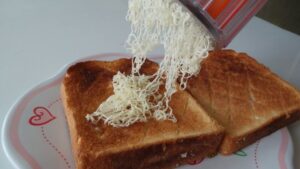
Cold butter can be challenging, but not with this technique.
Grate the butter directly over your hot toast. The heat melts the fine shreds quickly, giving you an even spread.
This method makes its preparation both fun and efficient.
3. The Slice, Sandwich, and Wait Approach:
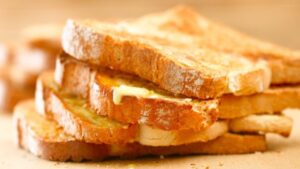 For this, place thin butter slices between two pieces of hot toast. The heat from the toast softens the butter.
For this, place thin butter slices between two pieces of hot toast. The heat from the toast softens the butter.
After a short wait, you’ll have perfectly spreadable butter for your toast.
It’s a clever way to get smooth butter toast without any hassle.
4. The Vegetable Peeler Trick:
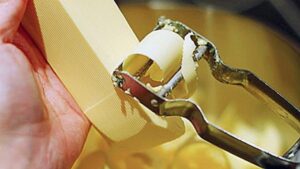
Use a vegetable peeler to create thin strips of butter. Lay these on your hot toast for even melting.
This method is great for those who want precise control over the amount of butter on their toast, ensuring every bite is just as delicious as the last.
5. The Butter Bell Method:
 Keeping butter in a butter bell at room temperature means it’s always ready for spreading.
Keeping butter in a butter bell at room temperature means it’s always ready for spreading.
This method is perfect for those who enjoy butter toast regularly.
It keeps your butter soft and spreadable, ideal for a quick, delicious butter toast anytime.
6. The Fruit Zester Method:
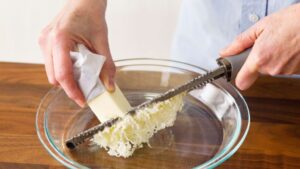
Use a fruit zester when your butter is too hard to spread. It creates fine butter shavings that melt quickly on warm toast.
This method is a lifesaver for frozen butter, making your butter toast preparation quick and easy.
7. The Garlic Press Technique:
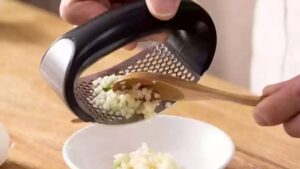 Pressing cold butter through a garlic press produces fine butter strands. These melt swiftly on hot toast, ensuring an even spread.
Pressing cold butter through a garlic press produces fine butter strands. These melt swiftly on hot toast, ensuring an even spread.
This technique is great for those who want to avoid the mess and get a quick, even layer of butter on their toast.
Alternative Ways to Make Butter Toast
- Herb-Infused Butter: Enhance your diet by mixing herbs or spices into your butter. Garlic, cinnamon, or rosemary can add a delightful twist.
- Oven-Broiled Method: Spread butter on your bread and broil it in the oven. This quick method ensures even browning and a delicious crunch.
- Double Toasting: Lightly toast your bread, apply butter, then toast again. This double-toasting technique adds an extra layer of crunch to your toast.
- Sweet Toppings: After butter, add a layer of honey or jam. This sweet addition creates a perfect balance of flavors for a delightful experience.
- French Toast Style: Dip your bread in a mix of beaten eggs and milk, then fry in butter. Top with a little more butter for a rich, indulgent butter toast.
Wrapping Words
Mastering the perfect butter toast is about combining the right techniques with creativity. Whether you prefer a classic approach or something more innovative, these methods will elevate your experience.

